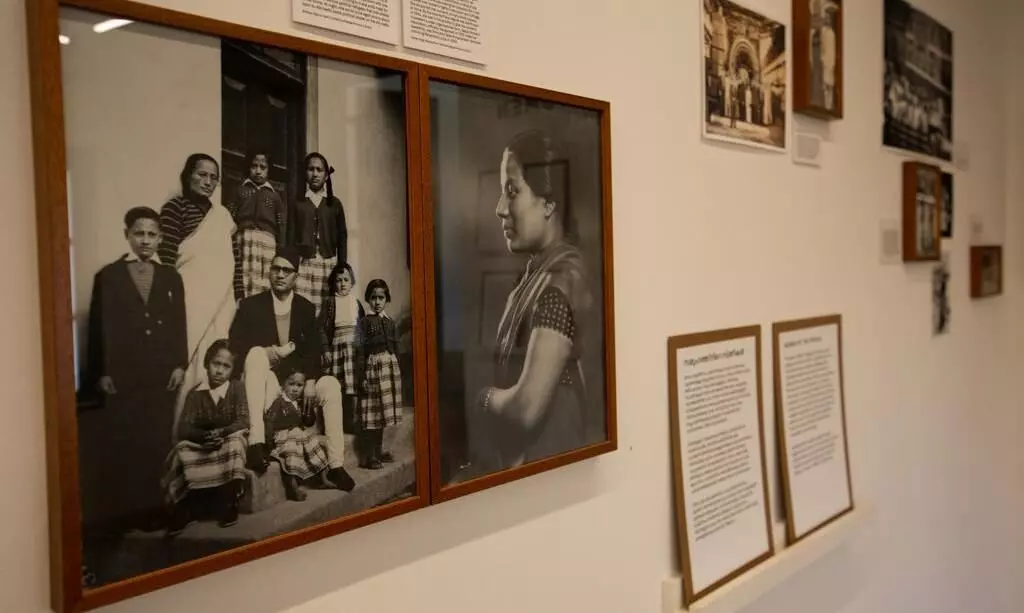
Nepal's story of women empowerment finds expression in Biennale
text_fieldsKochi: The Kochi Muziris Biennale has become a platform where one can see and experience the different facets that chiefly contributed to the advancement of women in society, thanks to the vast collection of historical artefacts, among others. One such novel art creation titled 'Women's Public Life', prepared by the Nepal Picture Library, is on display at the Fort Kochi Pepper House. The creative work, which enables the audience to have a historical glance at how the call for presence in the public sphere has contributed majorly to women's empowerment in Nepal, is relevant anywhere, anytime.
"Being visible in the public sphere means being seen and valued in history as well. The journey of Nepali women from the boundaries of home to the open courtyard of public life is a shift from the state of being hidden and unimportant to that of lasting memory," says Raja K.C. and Nayantara Gurung Kakshapati, curators of the exhibition.
The attempt was to set up an archive wholly for women, for which the Nepal Picture Library indulged in oral history research and amassed private collections, including notes, photographs, and publications. How intertwining all this into different photo albums to reveal the life history of Nepal women is being narrated through the special exhibition 'Women's Public Life'.
The lives of different Nepali women, who were willing to enter the public sphere on their own, can be seen in a layered form. Past events in which women became part of political fights, addressed collectives, opened up paths to public life through education, framed opinions, had them published, travelled around the world, and narrated the experience, thus becoming personal figures of leadership and dismantling social regulatory frameworks -- the unique exhibition enables the viewers to experience all these contributing factors.
To gain education, the Nepali women had to march defiantly against the notion that girls' education was an unnecessary step that would lead to the destruction of values and threaten the social order. A few pictures from the past can be seen in the exhibition, which captures the huge leap that women and girls could make in their lives through studies and knowledge acquisition. Also, how the schools allowed women to experience collectiveness can be seen in the exhibition.


















